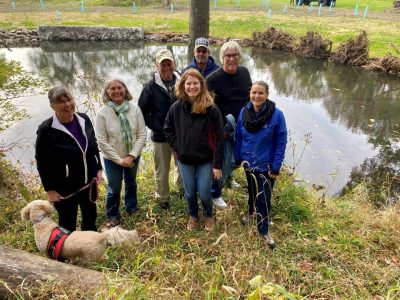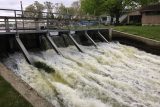Progress: TWF’s Deeds Creek project means brighter future for Pike Lake
Thursday, January 12, 2023
Changing course is often necessary for improvement. Changing the course of a stream or creek, however, can have unknown consequences – and they aren’t always good.
Such was the case with Deeds Creek in Warsaw. Man-made changes to the flow of water in the creek, over time, have had negative consequences for nearby Pike Lake, including streambank erosion, loss of habitat, and most importantly – blocking the movement of fish upstream and downstream.
“As best as we can tell, the dam was built in the 1950’s and was part of the infrastructure that was used to separate Deeds Creek and its watershed from flowing into Pike Lake,” said Scott Fetters of the US Fish & Wildlife Service. “Prior to the dam being installed, Deeds Creek used to flow west of the dam location and into the original wetland complex that has now become Little Pike Lake.”
“Deeds Creek never used to flow into Pike Lake as it does now today,” Fetters continued. “However, the dam had removable boards known as ‘stoplogs’ that could be removed and water could be sent from the dam down the channel to Pike Lake.”
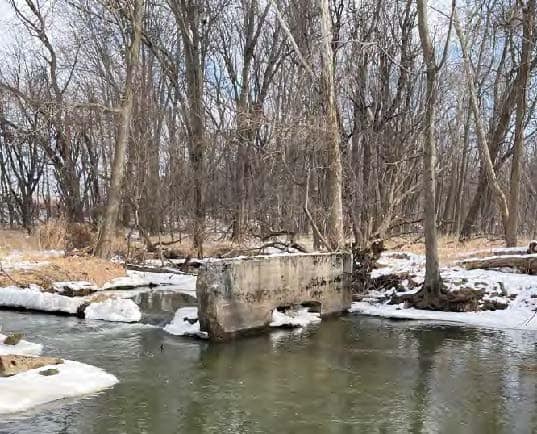
By early 2022, the aging dam was also crumbling. It needed to go.
Concerned with the quality of all lakes and waterways in the watershed, The Watershed Foundation worked with partners to initiate a plan to change the course of the future of Pike Lake.
The $56,000 project took more than two years to organize, but, according to Lyn Crighton, executive director of The Watershed Foundation, completing the project went very quickly.
“It took over two years to procure the landowner permission, partners, funding, as well as state and federal permits,” Crighton said. “But, it only took a week to implement!” The project began and was completed in September of 2022.
Once on site, the project began with removal of the old concrete dam. Then, 225 feet of eroding streambanks were stabilized using a toewood method utilizing existing woody debris, root wads and approximately 90 tons of granite boulders. Mimicking natural wood in streams, the toewood technique helps stabilize streambanks while creating and improving habitat for largemouth and smallmouth bass, aquatic invertebrates, and mussels.
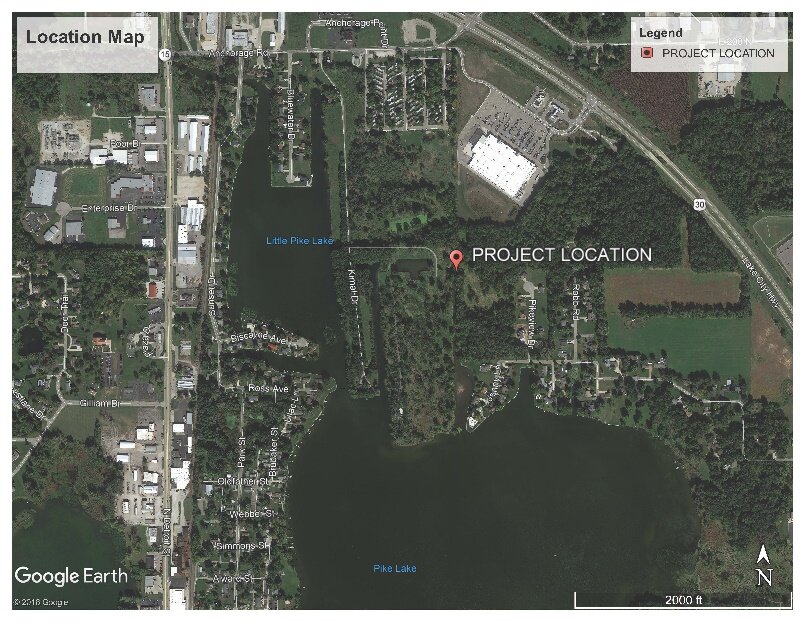
“Additionally, the Kosciusko County Drainage Board and Surveyor’s office have agreed to look at installing a new sediment trap on Deeds Creek downstream of the former dam site providing additional water quality benefits,” said Crighton.
Implementation of the project was surprisingly quick, but what it accomplishes is a bit more complicated, with long term results that change the health of Pike Lake and the many species of animals that occupy it.
“The primary objective was to improve water quality, reconnect aquatic organism passage and increase habitat in Deeds Creek. The primary organisms that benefit include fish, mussels, and aquatic invertebrates,” said Crighton. “The project will also provide improved spawning habitat for Northern Pike by restoring and reconnecting floodplain habitats, as well as largemouth and smallmouth bass by installing woody debris to provide additional streambank erosion control and fishery habitat.”
The Watershed Foundation coordinated the funding and logistics for this project, other partners included the US Fish & Wildlife Service, the Indiana Department of Natural Resources’ Lake and River Enhancement Program, Indiana-American Water Company, NIPSCO/NiSource, the Pike Lake Association, Meijer Stores, Cardno (now Stantec), S & L Environmental and, very importantly, landowner Kim Cox.
Working hand in hand with landowners is critical to the success of watershed projects, Crighton believes.
“The vast majority of our projects take place on private land. Sustainability of our land and water resources requires a stewardship ethic, and we are indebted to and grateful for landowners who are willing partners,” Crighton stated. Cox’s willingness to take an active role in the project means meaningful, positive change for Pike Lake.
And what will the Deeds Creek project mean to the future of our watershed?
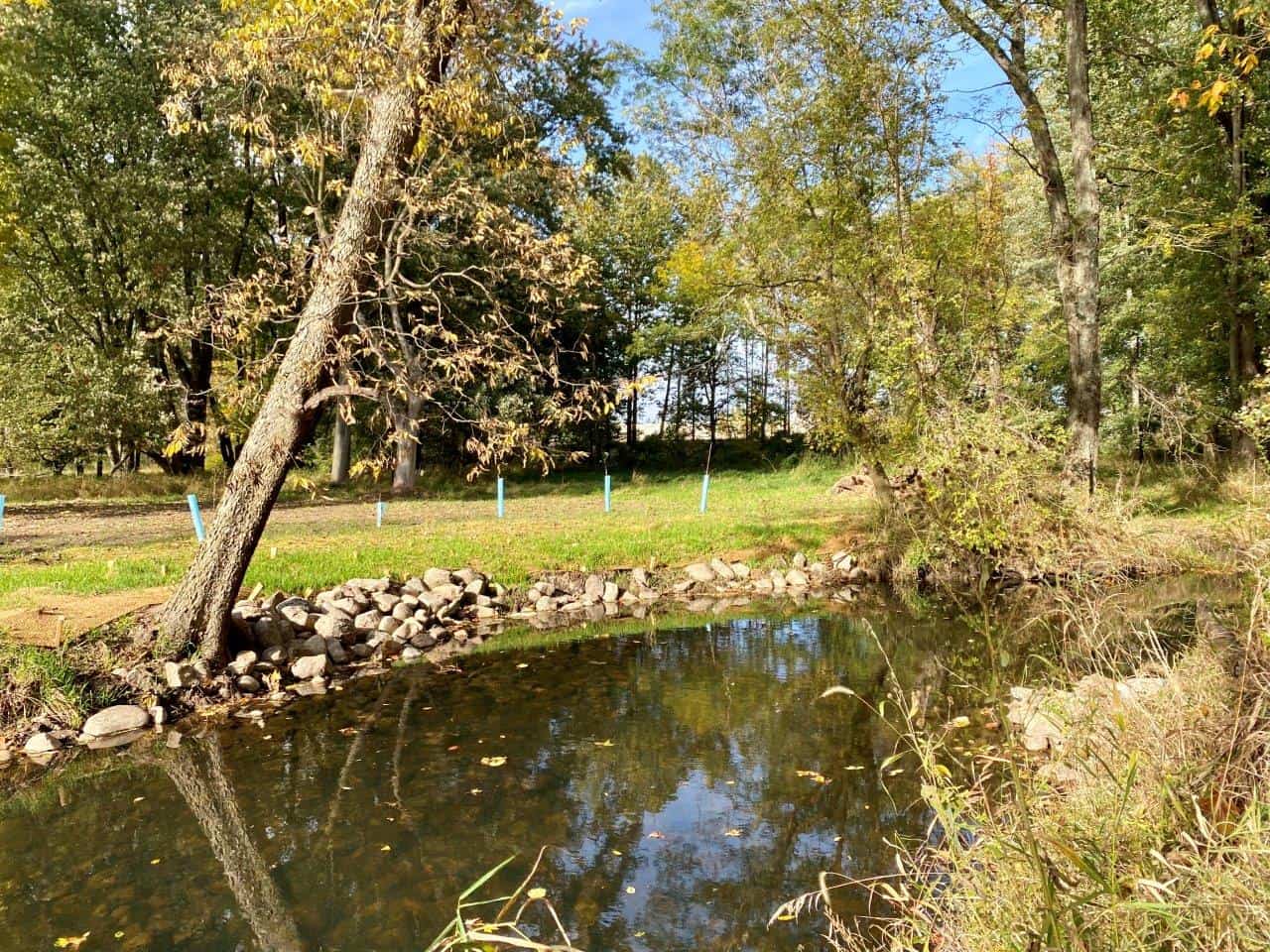
“It is especially exciting that this project reconnects 60+ miles of Deeds Creek headwaters and its aquatic life to the Tippecanoe River,” Crighton said. “The Nature Conservancy considers the Tippecanoe River one of the top ten rivers in America that must be preserved. Of the 57 species of mussels that historically lived in the river, there are 49 species still residing here, including 6 species of federally-endangered mussels and 4 state-endangered fish.”
“The water quality benefits of this project to Pike Lake are another critical component. Our beautiful water resources provide abundant recreational and aesthetic opportunities for our residents and visitors,” added Crighton. “The lakes and streams in Kosciusko County are of enormous value to the community, contributing $313 million per year to the local economy according to a 2013 study by Grace College.”
Categories:
Be a Hero for Healthy Lakes!
Our lakes need help. Our lakes need you. You can volunteer on clean water projects, take an action pledge, attend an event, donate funds – there are so many ways to make a difference! Will you join us?
